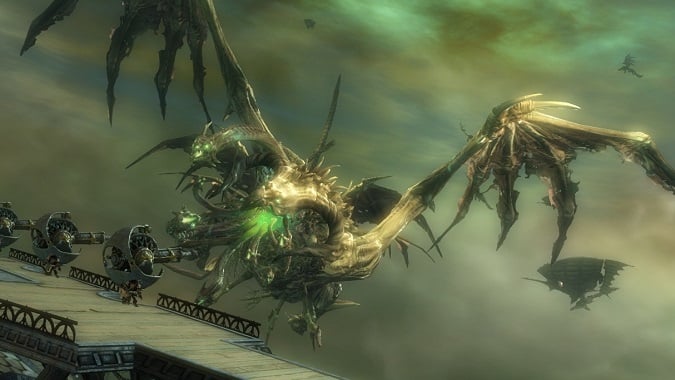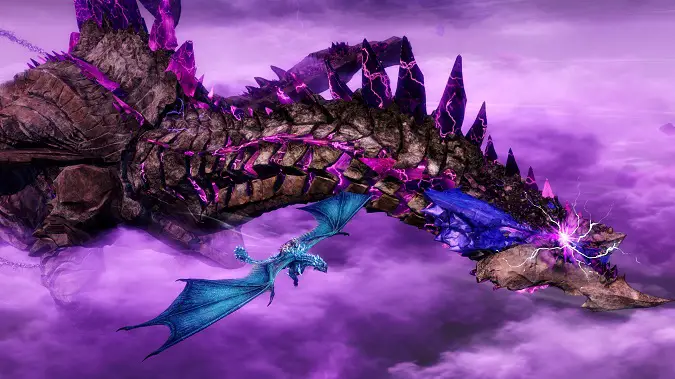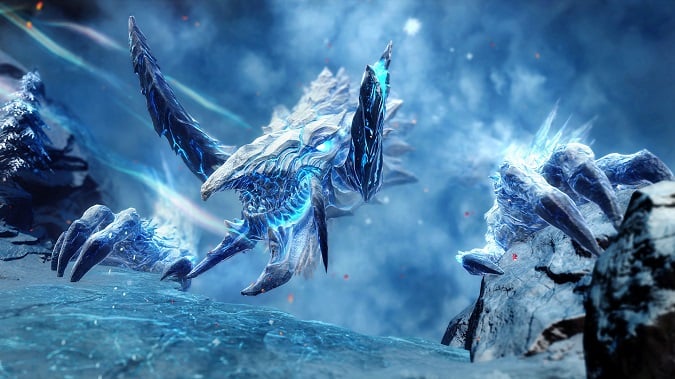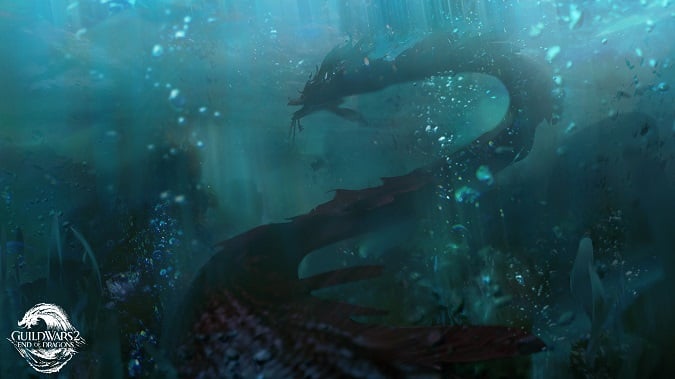Who are the Elder Dragons of Tyria, and what does the End of Dragons mean to Guild Wars?

The six Elder Dragons have been the narrative crux and primary antagonists of Guild Wars 2 since its release almost 10 years ago, but as the series has progressed our opposition to their devastation has gone in many unexpected directions. Now that we’re heading to Cantha in End of Dragons, the expansion title suggests that this core storyline will be ending and GW2 will take our characters down new story paths. But why are the Elder Dragons so important to Tyria, and why does their end as described in the expansion title not necessarily signify a positive result for the forces opposed to them?
Note that this article contains spoilers for Guild Wars 2, its expansions Heart of Thorns and Path of Fire, and for all the Living Seasons.
Tyria is a world of magic, and that magic is what drives the Elder Dragons in their assaults on the people of the world. When there is too much magic in the world they awaken, devastate the land, and take the magic back into their bodies until they slumber once more. While they sleep, the magic seeps out from them as Tyria gradually rebuilds — until such time as they awaken yet again, and the cycle repeats. The Elder Dragons had been asleep over 11,000 years until they started waking again, the triggering event being the death of the fallen god Abaddon in Guild Wars: Nightfall. As they stirred the world transformed, and heroes were summoned to help defeat the threat they posed.

How is the player involved with the Elder Dragons in the first place?
While not the first to wake, Zhaitan — whose domains are death and shadow — was the first Elder Dragon to pose a direct threat to all civilization, as its waking just over a century before the start of Guilds Wars 2 had raised the fallen city of Orr and sent the Great Tsunami across the ocean, flooding the key human outposts of Lion’s Arch and Kaineng City. In the wake of the waves came the Risen, undead servants of Zhaitan who attempted to conquer the lands bordering the freshly-christened Sea of Sorrows and isolating the lands of Elona and Cantha from the main continent of Tyria.
Against this background the player character started their “Personal Story,” rising to the rank of Commander upon helping to forge the three main anti-dragon contingents — the Order of Whispers, the Vigil, and the Durmand Priority — into the Pact. As Pact Commander the player is able to defend Lion’s Arch from assault by Zhaitan’s lieutenants and take the fight to Orr and eventually to Zhaitan itself. The defeat of Zhaitan by the Pact is the climactic moment of the base game of Guild Wars 2, and its significance to the people of Tyria can not be understated as it proved that the Elder Dragons were not immortal.
At this point, there was no sense that the elimination of a primordial power could have repercussions, but those started to become apparent when Mordremoth, the Elder Dragon of Plant and Mind was awakened by the mad Sylvari Scarlet Briar. The Sylvari, creatures only recently born from the Pale Tree and available as a player race, were found to actually be children of Mordremoth and thus susceptible to his control. While the players were of course not turned, there was significant concern whether the Pact leader Marshall Trehearne — a Sylvari — could be trusted, undermining the Pact’s attempt to fight and defeat Mordremoth.
Of greater concern was the discovery that Mordremoth was able to create his Mordrem servants from the dead as well as from the living. This ability was a consequence of Zhaitan’s death, as its powers had been unknowingly spread to the other Elder Dragons. Despite the growing concern of the player and allies, Mordremoth was killed with Trehearne’s sacrifice key to victory, but now Mordremoth’s power joined Zhaitan’s in dispersing to the remaining four Elder Dragons.

The madness of Kralkatorrik and the rise of Aurene
The death of Mordremoth set three of the Elder Dragons in motion: Kralkatorrik, the Elder Dragon of Crystal and Fury, expanded his reach in the lands of Elona; Primordius (Fire and Conflagration) became active and traveled to the Sea of Fire; and Jormag (Ice and Persuasion) was once against threatening the northern Shiverpeak Mountains. One good thing came of it though: Aurene, granddaughter of Kralkatorrik, was born. Though Aurene started off as precocious whelpling, her bonding with the player gave hope to Dragon’s Stand (the name of the guild formed by the commander and allies) that perhaps a Dragon could ascend to Elder status while remaining an ally.
The need for Aurene became pressing when Dragon’s Stand found that Balthazar, human god of fire and war, had come to wage his own war on the Elder Dragons, even though doing so could destroy Tyria as well. After being stymied in his attempt to get Jormag and Primordius to kill each other — they are each other’s greatest weakness — he went after Kralkatorrik in the Crystal Desert. The player had no choice but to kill Balthazar, but in doing so the god’s power was absorbed by Kralkatorrik and Aurene.
The addition of Balthazar’s power on top of Mordremoth’s and Zhaitan’s ended up being too much for Kralkatorrik, who went mad due to the conflict of the powers in his mind. Aurene and the Commander were able to defeat him, and Aurene absorbed Kralkatorrik’s power before it could destabilize all of Tyria. The confrontation transformed Aurene both mentally and physically, and she become an Elder Dragon of considerable power now, with her domains being Crystal and Light. She became uneasy at her grandfather’s madness, and became concerned it could happen to her one day as well.

A song of ice and fire dragons
Of all the Elder Dragons, Jormag is the craftiest, relying on its tongue more than its breath to create followers. In Aurene it saw a potential partner in its hope to upend the balance, for it knew that Primordius was its weakness and felt trapped by the configuration. Like the Commander and Aurene, Jormag wanted to end the cycle of devastation and slumber, but while Jormag did not lie, its capacity for deception was well known.
Primordius on the other hand was simply a force of nature, spreading fire and destruction with his every move. Fully awake now, he would need to be stopped or Tyria would burn, and Jormag sought to turn this threat to his advantage — with Primordius gone, Jormag would be free to do as it willed without fear of consequences. Aurene and the Commander knew that such a situation would be just as destructive as Primordius’ rampage, and took actions of their own to force the two into conflict.
While their proxies fought each other, the player manipulated the situation making sure neither got the upper hand and this eventually forced the two Elder Dragons to emerge and directly engage. As each other’s great weakness, the battle was short and predictable — both were killed, releasing their power into Tyria. Aurene was there to take in as much of as it she could, but she noted with some concern that not all the power had come to her, but some had instead gone south towards Cantha.

The Deep Sea Dragon and the possible End of the Cycle
On the eve of End of Dragons there remain only two Elder Dragons: Aurene, and one that is known as the Deep Sea Dragon, so far unencountered. Not only is its true name unknown — the community refer to it as Bubbles or Steve — it is also unknown what the attitude of it may be. Will it be a creature of rage like Primordius, or will it have gone mad like Kralkatorrik? Perhaps this one will be much closer in temperament to Aurene than any of the others.
There is a clue as to the identity of the Deep Sea Dragon, and that’s a passing mention of another individual that Kralkatorrik makes when dying: “mother.” Perhaps it is the progenitor of the other five original Elder Dragons, and as such, is the most powerful opponent — or maybe ally? — the player has encountered yet.
If the Deep Sea Dragon is the mother of the others, though, it brings up an intriguing possibility for the resolution of the cycle of destruction and slumber that the Elder Dragons and Tyria have coexisted in for some time now. Until Kralkatorrik’s mention of his mother it had been believed that the six Elder Dragons were a set of siblings in the balance. If there is a mother dragon and the five her children, then maybe there’s a larger cycle guiding the Elder Dragons as well — one in which a mother absorbs the energies and magic of Tyria into herself (similar to what Aurene has done) and then disperses it amongst her scions to prevent the madness that had consumed Kralkatorrik from plaguing her as well.
If this is indeed the case, we may see Aurene divest herself willingly of powers to her “children” (whomever they may end up being) and entering into slumber with the balance and the cycle back in place. With the powers of Balthazar, Abaddon, and others added to the caretakers of Tyria’s magic, there may be enough now that civilization can continue without devastation. If and when Aurene and kin wake once more, perhaps they will unleash consideration and understanding on the residents of Tyria instead of devastation. Instead of taking back the magic, they can work with those who wield it in such a way that the balance is maintained — if Aurene’s bonding with the player is strong enough. Otherwise, it may be a case of “meet the new Elder Dragons, same as the old Elder Dragons.”
Whether the cycle will end entirely or continue in a different manner is a question that will be answered when players arrive in Cantha for End of Dragons.
Please consider supporting our Patreon!
Join the Discussion
Blizzard Watch is a safe space for all readers. By leaving comments on this site you agree to follow our commenting and community guidelines.
 @Kalcheus
@Kalcheus




